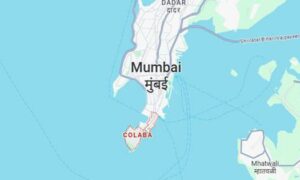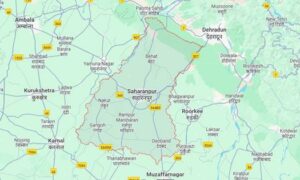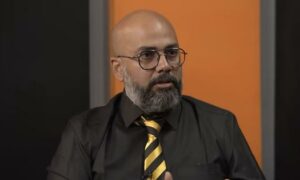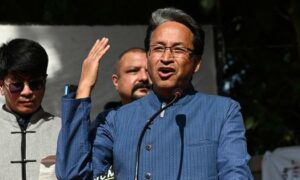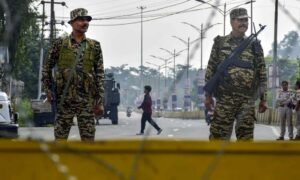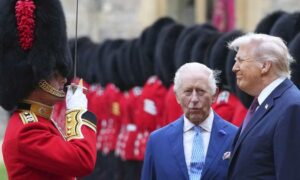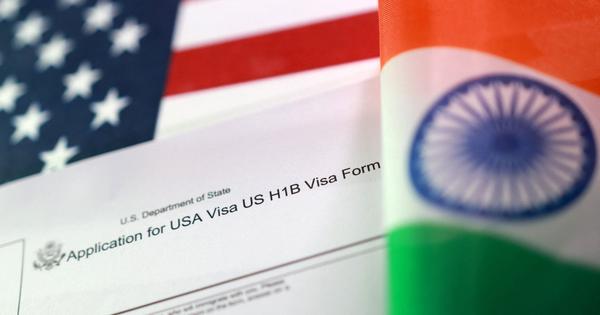
More than a week later, crucial details about the new $100,000 fee on H-1B visas remain undefined, said immigration experts and experts, which is causing panic among Indian communities and the tech industry in the United States.
On September 19, US President Donald Trump signed the proclamation, “Restriction on Entry of Certain Nonimmigrant Workers”, sparking widespread confusion among immigrant employees. The same day, an Emirates flight from San Francisco to Dubai was stuck on the tarmac for three hours as H-1B visa holders scrambled to understand if they would be able to re-enter the US. At least five people deboarded before the plane took off.
Eighteen hours after the proclamation was issued, clarifications followed. White House Press Secretary Karoline Leavitt said the $100,000 fee would be applicable “only to new visas, not renewals, and not current visa holders” and that H-1B visa holders can leave and re-enter the US as they normally would. The new fee amounts to about Rs 88 lakh.
The United States Citizenship and Immigration Services, or USCIS, the federal agency that processes visa applications and immigration benefits, said the proclamation did not apply to existing visa-holders or those who had applied before the cut-off date on September 21. The Customs and Border Protection and the US State Department clarified that petitions submitted before the cut-off date were not affected.
But it is still not clear how the new rules will affect Indians currently working, or seeking work, in the US.
What happens to renewals, transfers?
H-1B visas are issued for three years and need to be renewed but there is no clarity on whether the new $100,000 fee would apply to visa extensions or situations like employer transfers, immigration attorneys told Scroll. The White House has said that “renewals” were exempt from the fee, but attorneys say that may not cover common H-1B visa situations such as workers changing employers or students transitioning to work status.
“USCIS has not yet defined whether transfers or changes of status fall into the category of ‘renewals’,” said Nicole Gunara, an immigration attorney with Manifest Law, an immigration law firm in the US. “Out of caution, employers should assume the fee applies to most filings other than straightforward extensions with the same employer.”
The policy does not affect the current lottery cycle of H-1B visas but will apply to the next one starting in March.
H-1B visas are issued through an annual lottery system. Though the application process begins in March, the new cycle of H-1B visa allotments will only take place in October 2026.
But it is also not clear how the new rules will affect the next cycle of H-1B visa allotments since the proclamation will expire on September 21, 2026, days before the new visas are granted.
Henry Lindpere, a senior immigration attorney, said USCIS has not clarified whether the fee requirement will expire, be extended, or be reinterpreted when that date arrives. “For now, employers should assume the fee applies to 2026 filings until new guidance is issued,” said Lindpere.
The new rules further include a loophole that could allow major employers to bypass the $100,000 fee.
Under section 1(c) of the order, the Secretary of Homeland Security has discretionary authority to exempt individual workers, entire companies or whole industries from the fee if their hiring is deemed to be in the “national interest” and poses no threat to US security or welfare.
Technology giants are among the primary beneficiaries of the skilled-worker visa programme. This year, Amazon sponsored the highest number of workers on H-1B visas, followed by Tata, Microsoft, Meta, Apple and Google.
Critical part of the President’s new $100,000 charge for H1-B visas: The Administration can also offer a $100,000 discount to any person, company, or industry that it wants. Replacing rules with arbitrary discretion.
Want visas? You know who to call and who to flatter. pic.twitter.com/a5mr6Eob4P
— Justin Wolfers (@JustinWolfers) September 20, 2025
Indians dominate
Indian nationals dominate the H-1B programme, making up more than 70% of the recipients, while Chinese nationals represent the second-largest group at approximately 12%, according to the USCIS.
The concentration is pronounced in technology roles, where over 80% of computer-related H-1B positions are filled by Indian workers, according to the 2015 Freedom of Information Act data. Observers say this has not shifted significantly in years.
The effect of the new fee is expected to ripple out beyond the tech sector, like the healthcare industry, which is also dominated by Indians.
In 2023, more than 8,200 H-1B visas were approved for workers in general medicine and surgical hospitals. Indian medical graduates represent the largest group among foreign-trained doctors in the US, making up nearly one-quarter of all international physicians currently practicing in American hospitals.
Universities brace for impact
Experts say that the high visa fee is also likely to incentivise Indian students and workers to study in other countries, which will affect the American university system. Indians currently make up one in four international students in the US.
Sudhanshu Kaushik, a PhD student at Johns Hopkins University and founder of the North American Association of Indian Students, which represents 25,000 members in 120 universities, said the visa fee could have a “catalytic effect” “Higher education in the United States is not worth the cost and the risk that you have to put in anymore,” said Kaushik added.
He also said the change in the rules seem to be aimed at creating fear rather than bringing about meaningful reform. “The more details that emerge, the more you realise this was a move to create a mindshift in immigrants,” said Kaushik. “…To remind them of how disposable they are and that unless you are already a citizen, you don’t belong.”
📰 Crime Today News is proudly sponsored by DRYFRUIT & CO – A Brand by eFabby Global LLC
Design & Developed by Yes Mom Hosting

